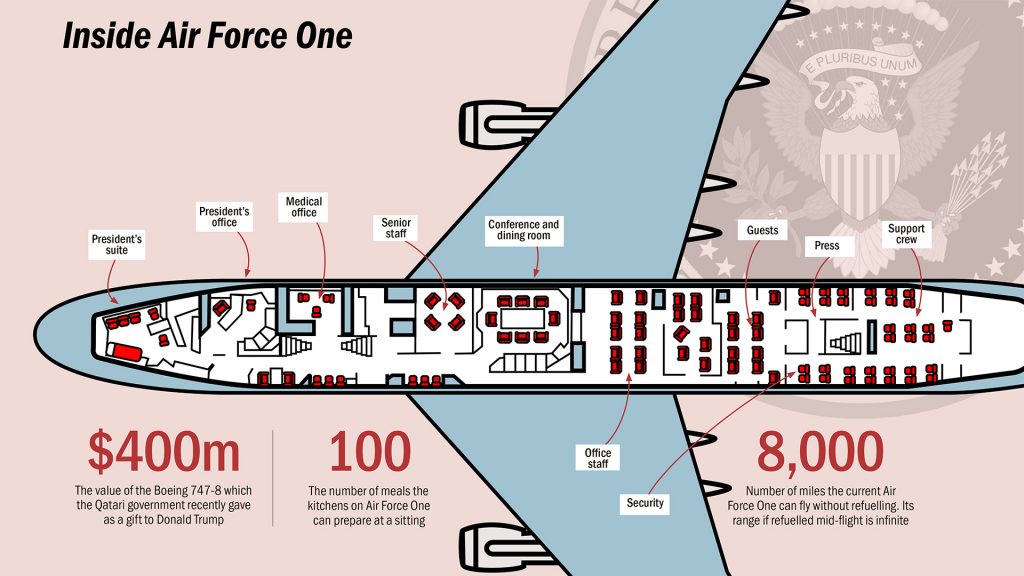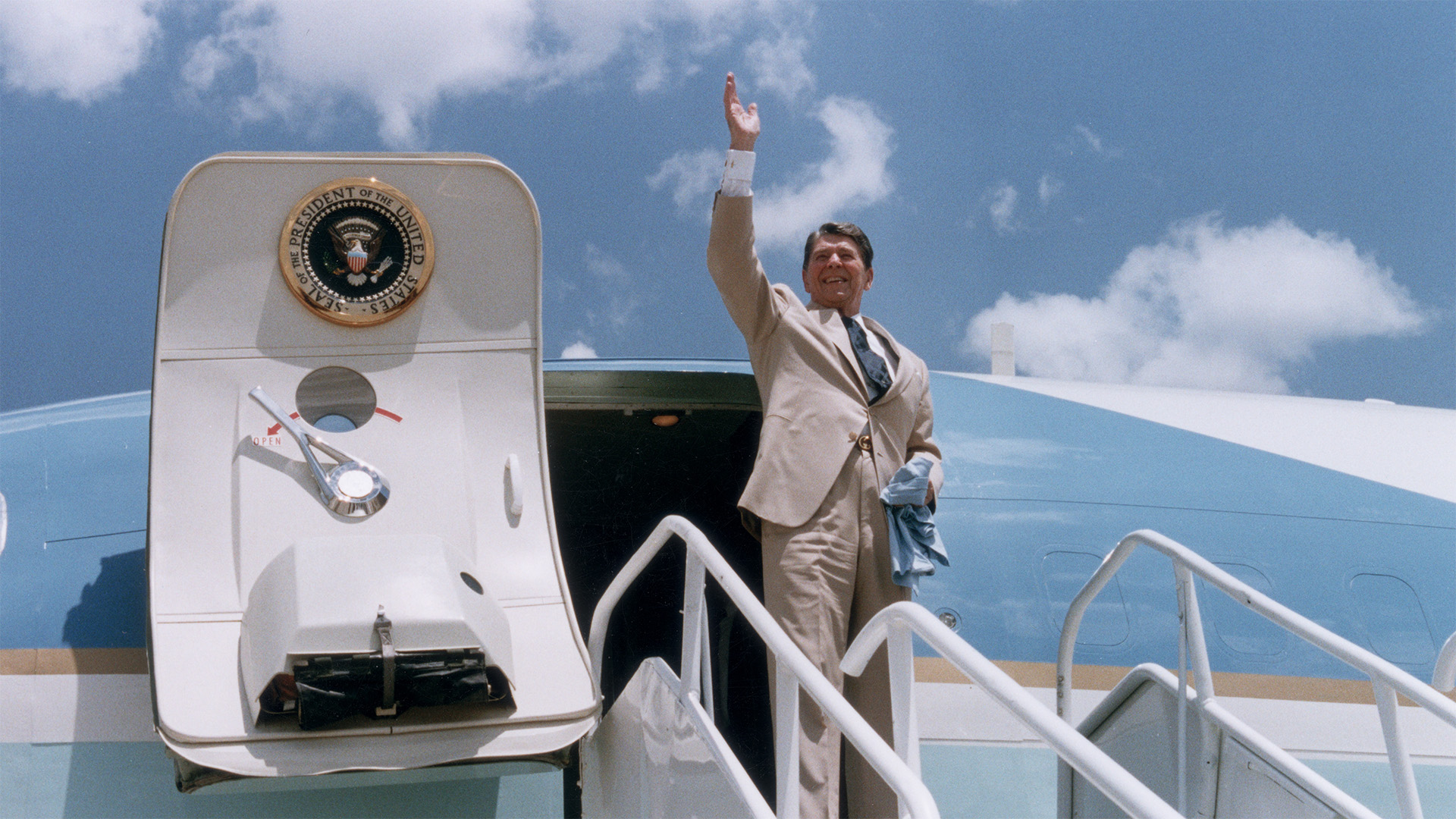Digging into the detail and data to separate the noise from the news
1. “Air Force One” can technically refer to two different things. It’s the name for a specific, specially adapted Boeing VC-25 used by the US Air Force to carry the president (actually, two different specific, specially adapted Boeing VC-25s). It’s also a call sign used to communicate with air traffic control, to let them know that this is a US Air Force plane currently carrying the president. It’s as if the phrase “Bob’s car” could refer to Bob’s car, Bob’s other car or any car Bob is currently in.
2. Roughly two-thirds of US presidents did not set foot on Air Force One. There are, if you stop to think about it for half a second, very good reasons for this.
3. The first president to step on a plane while in office was the 32nd president, Franklin D Roosevelt. He never actually used the first presidential aircraft designed for him by the US Navy (a Douglas Dolphin amphibious flying boat specially modified with luxury upholstery and a sleeping compartment). But, led by a combination of improved aviation technology and increased German U-boat activity, he did take transatlantic commercial flights.
4. The first presidential plane to actually see a president was the Douglas C-54 Skymaster, which FDR used to get to the 1945 Yalta conference in Crimea. It came with a state room, bulletproof picture windows and an elevator to help the wheelchair-bound president on and off. The press christened it “Sacred Cow”.
5. The phrase “Air Force One” dates from 1954. The pilot of Columbine II – a Lockheed Constellation/VC-121 used as presidential transport, named as a sequel to the plane Dwight D Eisenhower had used while running the war in Europe – is said to have worried that the plane’s name was too similar to a nearby commercial airline, and come up with the call sign off the cuff.

6. When the vice-president is the most senior government official on board, by the way, the call sign is Air Force Two. Disappointingly, this pattern does not continue all the way down the presidential line of succession, such that the plane carrying the secretary of veterans affairs, say, is Air Force Eighteen.
7. The official presidential helicopter, incidentally, is known as Marine One.
8. The blue and white livery that makes a plane recognisable as Air Force One today was the work of industrial designer Raymond Loewy, and dates from the John F Kennedy presidency in 1962. It was first used on the plane that would later carry Kennedy’s body from Dallas to Washington, and on which his successor, Lyndon B Johnson, was sworn in as president.
9. The current planes – a pair of specially converted Boeing 747 VC-25As, based at Andrews Air Force Base near Morningside, Maryland – have been in use since George HW Bush was president in 1990. They can carry 70 passengers, plus 26 crew, and include a seating and work area for the press; a combined conference-dining room; a presidential suite containing office, bedroom and private toilet; an in-flight medical centre, which can function as an operating suite; and two galleys allowing the preparation of 100 meals at a sitting.
10. They’re also equipped with electronics which can withstand the electromagnetic pulse of a nuclear explosion, plus a telecommunications centre allowing the president to direct war from the skies. The planes can be refuelled mid-flight, so never actually need to land.
11. The current Air Force Ones were due to be replaced in 2022, by which time they’d already have been the longest-serving presidential planes. But their replacement has been repeatedly delayed (Boeing is now saying 2027, but it’s said quite a lot of things), thus presenting an opportunity for any autocratic regimes that happen to have a plane going spare.
12. In 1997’s Air Force One, Harrison Ford played president James Marshall, who has to retake the plane from a team of Kazakh neo-Soviet terrorists who’ve hijacked it (79% on Rotten Tomatoes). In 2024’s Air Force One Down – which has, it must be said, a suspiciously similar sounding plot, only with Katherine McNamara as a rookie secret service agent – Ian Bohen played President Edwards. (That, alas, only got 11%.)
